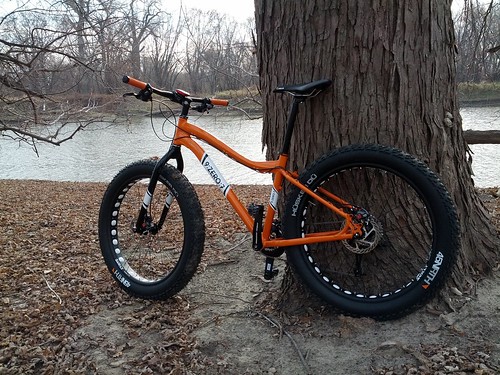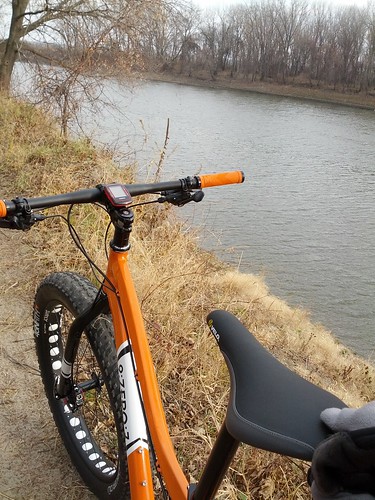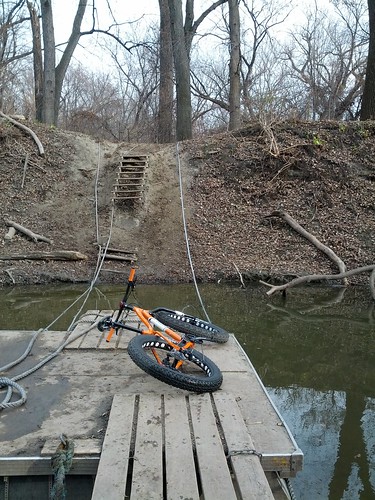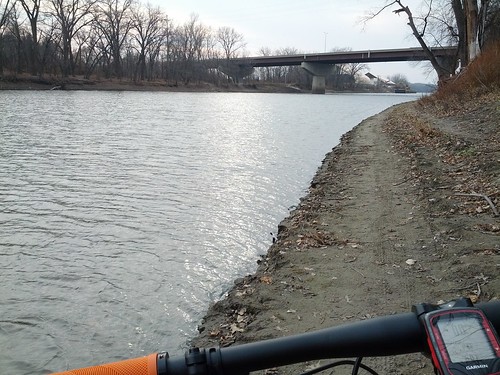Having the ability to make just about any plastic part in your house sounded great. Replacement parts for anything in the home, broken or lost parts to kid's toys, designing new bike accessories, model airplane parts, whatever. Even doing some "lost-wax" style aluminum casting would be fun to do. Plus, there is an enormous amount of free 3D models available online for download and printing at Thingiverse among other places. It might even be useful for manufacturing items to sell on ebay.
RepRap is one of the main open source systems out there, and after doing some research, I decided to build a variant called MendelMax 1.5. The idea behind RepRap is that each completed printer can replicate itself by printing components for another printer. MendelMax was attractive because it used industrial aluminum extrusions to build the frame, there is a local industrial salvage company called D&S machined products that has a large inventory for very reasonable prices.
 |
| Mendel Max Illustration from Thingiverse |
Video of someone's Mendel Max 1.5 in action:
Since the MendelMax is just one of the million flavors of RepRap out in the wild, there is some documentation available:
MendelMax 1.5 on Thingiverse
Great Build Log for 1.5
Trinity Lab's outstanding build manual
But, as I found out, a MendelMax 1.5 isn't a uniform species. Everyone has their own tweaks. So, when you order a kit of printed parts from someone, pay very careful attention to exact what hardware you need- it isn't the same from kit to kit. I'm sure it'll change eventually, but right now building a 3D printer is definitely for someone who wants to get their hands dirty and dive into all the details- it's not a plug and play deal.
Since I don't know anyone with a printer, I had to buy the parts. I ordered my kit from Lulzbot.com. They have a polished website, and their customer service was quick to answer questions via e-mail before the purchase. However, their site is a little confusing with many broken links and not a clear BOM to tell you what you need for the 1.5 build. In particular, the kit doesn't include the X-axis parts, and the components to finish the Y axis. If I were to build another with purchased components, I'd probably buy a more complete printed part kit from another source.
I ordered the hardware from McMastercarr.com- lots and lots of metric SHCS, drill rod for ways, etc. Once the build is complete I'll post a complete BOM with sources. I haven't yet decided on which electronic package to use and where to source it.
On to the hardware build:
I purchased some used Bosch 20mm extrusions from D&S. They were in great shape, just a few un-needed holes here and there. I was able to cut them to length using my power miter saw with a standard fine tooth carbide blade. I did clamp the extrusion to the saw and made the cut very slowly. The cut quality turned out almost perfect- I didn't have to do any cleanup filing at all. One of the biggest problems was just finding a metric tape measure- all the majors didn't carry one- Menards, Home Depot, Lowes all lacked a metric tape. Then I remembered that QBP gave away a free tape measure during one of their open houses years ago. I dug it out of my bike toolbox and it worked great.
 |
| Cut Quality Illustration |
 |
| 300mm and 420mm Extrusions for printer base |
I used the Trinity Labs manual as a guide for assembling the frame. One big difference between their build and the Lulzbot 1.5 design is that Trinity 1.5 uses a linear slide for the Y axis, and the Lulzbot uses two 8mm diameter precision drill rods for the ways. I had to dis-assemble the base so I could insert some additional T-slot nuts to accomidate the Y-axis rod mounts.
Note that all of the black plastic parts seen in the photos are 3D printed ABS parts purchased from Lulzbot.com.
 |
| Assembled MendelMax 1.5 base with Rod mounts in place |
 |
| Y Axis Rod Mount detail |
 |
| Rod Clamps in place |
 |
| Cleaning up Clamp to fit 8mm Drill Rod (don't worry, the skewed angle of the drill is only because I was also holding a camera, it was square when I actually drilled the hole) |
 |
| Test Fit of the 8mm Drill Rod |
 |
| Cutting the drill rod to length using a hack-saw, vise, and plenty of oil |
 |
| Ways in place, with 8mm SDP bushings mounted |
 |
| Y-Axis Idler / Tensioner mounted |
 |
| The screw on the top presses against the base extrusions to add tension to the belt |
Next step after the base was built was to add the upper platform. Yet another Lulzbot annoyance- I found out the they had included 4x of the Lower Vertex (left) mounts, instead of 2x Left and 2x Right. I assembled the platform anyway just so I could get as much assembly done as possible. The Lower Vertex mounts connect the diagonal beams with the base platform. You can see the incorrect part being used on the lower right hand side of the photo- with the "left" component being using on the "right" side.
UPDATE: Lightning fast customer support from Lulzbot- they said they'd ship out the replacement parts today as well as fix the broken links on their 1.5 kit web page.
 |
| Assembled Frame, back view |
 |
| Assembled Frame, Front View |
 |
| Pressing 8mm Bushings into X-Axis Slide Using Vise |




































